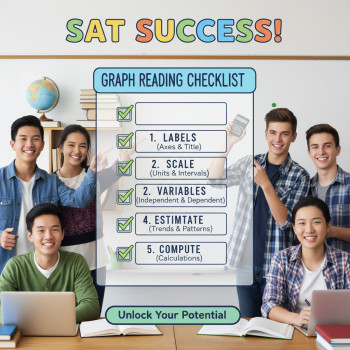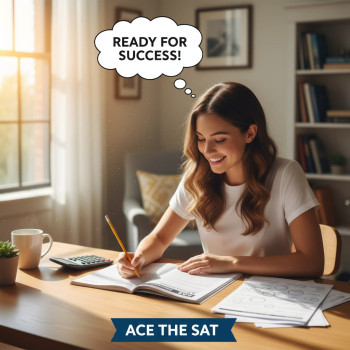Understanding the Landscape: Does the University of Kentucky Want SAT Scores?
If you and your family are navigating the college application maze, one of the first questions is whether to take (and submit) SAT scores for the University of Kentucky (UK). Over the past few years, many universities updated testing policies; some went test-optional, some test-flexible, and others reinstated testing. For UK applicants, the common-sense starting point is this: SAT scores remain a considered part of the application when submitted, but policies can evolve, so treat score submission as a strategic choice rather than a mechanical requirement.

Why SAT scores still matter
Even when a college says scores are “considered if submitted” (rather than strictly required), the SAT can influence admissions decisions, scholarship eligibility, course placement, and competitive programs. Think of your SAT score as one strong, quantifiable data point that complements GPA, coursework rigor, essays, activities, and recommendations.
What score should you aim for?
Universities often publish a middle 50% SAT range for admitted students — the range between the 25th and 75th percentile. For the University of Kentucky, a practical target is to be competitive within (and ideally above) the middle 50% of admitted students. Hitting or exceeding the upper end of that range increases your chances for scholarships and makes your application stronger, especially in tighter majors.
How to pick your target score
- Baseline: Know UK’s middle 50% SAT range and treat the midpoint as your starting target.
- Stretch goal: Add 50–120 points beyond the midpoint to be competitive for merit scholarships or selective programs.
- Context matters: If your GPA is lower than peers’, a higher SAT can help. If your GPA is strong, you might not need to hit the absolute top of the range, but better scores never hurt.
Digital SAT: What’s different and what to expect
The SAT transitioned to a digital format, which affects timing, navigation, and practice strategies. The digital SAT is shorter, delivered on a laptop or approved tablet, and adapts section-by-section. These are practical advantages for students who prepare with screen-based practice and learn to manage pacing across adaptive modules.
Prep priorities for the digital format
- Practice with full-length digital practice tests to get used to the interface and adaptive behavior.
- Sharpen time management for shorter, focused sections — practice pacing in 20–40 minute blocks.
- Get comfortable reading passages and solving problems on-screen: annotate digitally, use the built-in tools, and practice scrolling efficiently.
Application strategy: When to submit scores to UK
Deciding when (or if) to send SAT scores to the University of Kentucky should be part of a broader application timeline. Here are strategic considerations:
- Early applicants: If you apply Early Action and have a strong SAT score, submit scores to bolster your early file. If your score is below your target, consider waiting for a retake before submitting.
- Regular applicants: Use senior fall test dates to improve scores. If a late test gives you a meaningful uplift, it can still influence admissions — but confirm UK’s application review timeline and score-report deadlines.
- Scholarships: Many merit scholarships use standardized test scores as one metric. If scholarships are a priority, aim to submit the best available score by scholarship deadlines.
How UK evaluates SAT scores in the broader application
Universities don’t make decisions on a single number. At UK, admissions officers look for academic preparation, grades in rigorous courses, patterns of growth, essays, extracurricular commitment, and context. A strong SAT score can enhance your narrative, but it’s most powerful when paired with a consistent transcript and thoughtful application materials.
Examples of how scores interact with other parts of your application
- High GPA + Average SAT: Your coursework can carry weight. Emphasize advanced classes and teacher recommendations.
- Average GPA + High SAT: Demonstrates potential and readiness; explain academic context and highlight upward trends.
- Low GPA + Low SAT: This is the risk zone; consider retaking the SAT and strengthening other parts like essays and leadership roles to show growth.
Realistic timeline: Senior year planning and retake strategy
Timing is everything. Use a timeline that aligns test dates, application deadlines, and scholarship windows. Here’s a practical calendar to follow during junior and senior years.
| Month | Action | Goal |
|---|---|---|
| Junior Year Spring | Take a diagnostic SAT or PSAT; start targeted prep | Identify strengths/weaknesses; set target score |
| Junior Year Summer | Intensive review and practice tests (digital) | Raise baseline by 50–100 points |
| Senior Year Fall (Aug–Oct) | Take SAT; submit if score meets or exceeds target | Complete Early Action / Early Decision if applicable |
| Senior Year Fall (Nov–Dec) | Optional retake if needed; finalize applications | Maximize scholarship eligibility |
| Senior Year Winter (Jan–Feb) | Final retake for any late improvements | Send best scores; ensure deadlines met |
Scholarships and program-specific expectations
Merit-based scholarships at many public universities often consider standardized test scores as part of eligibility. If scholarships at UK are an important part of your plan, treat the SAT like an investment: improving your score could unlock meaningful funds.
Program-specific notes
Competitive majors (engineering, business, health sciences) can be more selective. Even if the university is broadly accessible, certain programs within it may favor higher test scores or additional materials (portfolios, auditions, essays). If you’re aiming for a selective program, target a score above the general middle 50% range.
Study plan that actually works
Generic study advice is easy to find; what matters is a plan you can stick to. Below is a practical 12-week blueprint for raising your SAT score meaningfully.
12-week SAT improvement blueprint
- Weeks 1–2: Diagnostic test (digital), identify top 3 weak areas, set daily micro-goals (30–60 minutes).
- Weeks 3–6: Focused skill blocks (e.g., algebra, evidence-based reading strategies, essay structure if needed), 2 full-length digital practice tests (timed).
- Weeks 7–9: Targeted practice on weaker question types, strategy drills for adaptive sections, work on pacing and digital navigation.
- Weeks 10–11: Full-length practice tests every 4–5 days with detailed error logs and remediation sessions after each test.
- Week 12: Light review, strategy refresh, test-day checklist, sleep and nutrition planning.
How personalized tutoring accelerates progress (where Sparkl can fit in)
Many students make the most progress when their study plan is tailored and coach-led. Personalized tutoring offers 1-on-1 guidance, tailored study plans, expert tutors who can identify subtle habits (like time-wasting on certain question types), and AI-driven insights to focus practice where it pays off most. Sparkl’s personalized tutoring model — combining human expertise and data-driven feedback — is the kind of support that helps students convert weak areas into reliable points on test day.
What to expect from a good tutoring program
- Diagnostic testing that pinpoints the highest-leverage improvements.
- A tailored study calendar that fits school, extracurriculars, and application deadlines.
- Regular practice with digital SAT tools, realistic simulations, and review cycles.
- Mentoring on test-day habits, stress management, and application strategy — not just problem-solving.
Test day: logistics, mindset, and last-minute tips
Test day is as much a psychological event as an academic one. The digital SAT reduces test length and adds conveniences, but nerves, pacing issues, and technical unfamiliarity can still cost points. Follow a checklist and mental routine to convert readiness into performance.
Test-day checklist
- Bring required ID and College Board confirmation — verify digital delivery rules (device requirements, permitted calculators).
- Arrive early, warm up with a short review (no cramming), and do breathing exercises to settle nerves.
- Use adaptive test strategy: if a section feels harder, trust your pacing and focus on accuracy rather than guessing wildly.
- After the test, review your feelings: what felt hard? What felt easy? This informs whether a retake is beneficial.
Putting it all together: a case study example
Imagine two students applying to UK with the same GPA but different SAT strategies.
- Student A took one SAT in the summer of junior year and scored near the 25th percentile of admitted students. They didn’t retake and applied early. Their application emphasized extracurricular leadership and a strong personal statement but lacked the SAT lift for merit awards.
- Student B used a diagnostic, followed a 12-week plan with targeted tutoring, and improved their score into the upper half of UK’s admitted range. They submitted the higher score, applied regular decision, and received a merit scholarship that made their financial decision easier.
The takeaway: a focused, evidence-based preparation plus strategic score submission can change both admissions posture and scholarship outcomes.
Frequently asked questions (brief answers for busy families)
Is the SAT required for University of Kentucky?
UK considers SAT scores if submitted. That means students can often choose whether to send scores, but submitting a strong score can strengthen an application and help for scholarship consideration. Always verify the most current policy directly with the university before finalizing a strategy.
What’s a competitive SAT score for UK?
A competitive score is one that places you in or above UK’s middle 50% for admitted students. Aim for the midpoint as your baseline and plan for a stretch goal that places you above the 75th percentile if scholarships or selective majors are your target.
How many times should I take the SAT?
Most students see meaningful improvement after one or two additional, focused attempts. Quality of preparation matters more than quantity of attempts. Use each retake as an opportunity to address specific weaknesses, not just to chase points without a plan.
Can tutoring really move my score?
Yes — targeted, personalized tutoring often yields faster improvements than lone study. Tutors help you avoid common pitfalls, correct inefficient habits, and prioritize high-value practice. Sparkl-style 1-on-1 guidance with tailored study plans and data-backed practice can accelerate gains and keep motivation high.
Final checklist before you submit
- Confirm UK’s current test policy and scholarship deadlines for the application cycle you’re entering.
- Compare your best SAT score against UK’s published ranges and your personal strengths.
- If your score is competitive, submit it; if it’s borderline, consider a retake if deadlines allow.
- Don’t neglect essays, recommendations, and course rigor — SAT is one piece of a holistic review.
- Consider personalized tutoring to target improvement and manage timing, especially if scholarships or selective programs are priorities.

Parting thought: Make the SAT work for your story
At the end of the day, the SAT is a tool — a measurable signal that, when combined with your academic record, activities, essays, and character, helps universities like the University of Kentucky see the whole you. Plan intentionally, practice smartly, and seek personalized help if you need focused improvement. A tailored approach — whether through disciplined self-study or 1-on-1 tutoring with expert guidance and AI-driven insight — can convert a stressful countdown into a clear path forward. You’ve got time, you’ve got options, and with the right plan you can turn the SAT into one of your strongest assets during the college application journey.
Good luck — and remember: steady, smart work beats last-minute panic every time.
















No Comments
Leave a comment Cancel